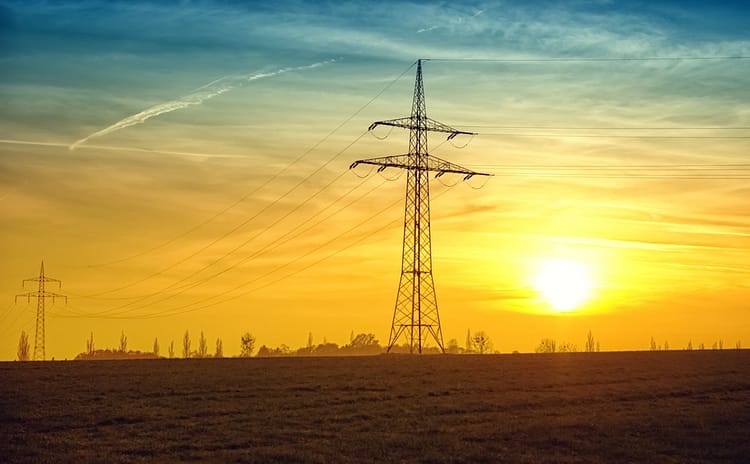Whether you’re struggling with the rising cost of living or you want to fight the climate crisis, these tips on how to save electricity at home will help you save money while helping the environment.
The 2023 IPCC report on climate change came with some grave final warnings. Time is running out, and we need to achieve the 1.5°C temperature goal fast before it’s too late. It’s up to every person on this planet to help stop a mass extinction event.
But in today’s world, where energy consumption is increasing rapidly, saving electricity at home is not only beneficial for your wallet but also for the environment. Reducing energy usage not only lowers your monthly bills but also decreases your carbon footprint, contributing to a greener, sustainable future.
To help you on your journey towards energy efficiency, here are 40 simple and practical ways to save electricity at home.
40 Ways to Reduce Your Home Energy Consumption
- Use Energy-Efficient Appliances: Opt for appliances with the ENERGY STAR label, as they are designed to use less energy without compromising on performance. Even outside the home, think about getting a hybrid or electric vehicle. This will help you be more sustainable inside and outside. Be sure to hire the best hybrid electric vehicle technicians to take the best care of your car.
- Unplug Devices: Many electronic devices continue to draw power even when turned off. Unplug chargers, gaming consoles, and other electronics when not in use.
- Switch to LED Lighting: Replace traditional incandescent bulbs with energy-efficient LED lights, which consume less electricity and last longer.
- Install Dimmer Switches: Dimming your lights reduces energy consumption and increases bulb lifespan.
- Utilize Natural Light: Open curtains and blinds during the day to let in natural light and minimize the need for artificial lighting.
- Smart Thermostat: Invest in a smart thermostat that can adjust the temperature based on your daily routine, optimizing energy use.
- Seal Gaps and Cracks: Inspect your home for gaps around windows, doors, and vents, and seal them to prevent energy leaks.
- Weatherstripping: Apply weatherstripping to doors and windows to keep your home better insulated.
- Regular HVAC Maintenance: Clean and maintain your heating and cooling systems to ensure optimal efficiency.
- Ceiling Fans: Use ceiling fans to circulate air, making your home feel cooler without relying heavily on air conditioning.
- Energy-Efficient Showerheads: Install low-flow showerheads to reduce hot water consumption while still maintaining water pressure.
- Fix Leaky Faucets: A dripping faucet can waste gallons of water and electricity over time.
- Cold Water Laundry: Wash your clothes with cold water whenever possible, as heating water accounts for a significant portion of your electricity usage.
- Full Loads Only: Wait until your dishwasher and washing machine are full before running them to maximize their efficiency.
- Air-Dry Dishes: Let your dishes air dry instead of using the dishwasher’s drying cycle.
- Clean Filters Regularly: Clean or replace filters in your HVAC system, dryer, and other appliances to improve their efficiency.
- Insulate Your Home: Properly insulate your walls, attic, and floors to retain indoor temperatures effectively.
- Power Strips: Use power strips to group electronic devices together and easily turn them off when not needed.
- Energy-Efficient Windows: If possible, replace old windows with energy-efficient ones that can help maintain indoor temperatures.
- Renewable Energy: Consider installing solar panels to harness renewable energy and reduce your reliance on the grid.
- Turn Off Lights: Encourage family members to turn off lights when leaving a room.
- Use a Laptop: Laptops consume less energy than desktop computers.
- Adjust Fridge Temperature: Set your refrigerator temperature to the manufacturer’s recommended setting to avoid unnecessary energy consumption.
- Cook Wisely: Use the appropriate-sized pots and pans when cooking, and match them with the burner size.
- Microwave vs. Oven: Opt for the microwave for smaller cooking tasks instead of using the oven.
- Seal Fireplace: When not in use, seal your fireplace to prevent heat loss.
- Programmable Timers: Use programmable timers for lights and appliances to turn them off automatically.
- Optimize Pool Pump: Reduce the operating time of your pool pump during off-peak hours.
- Use Natural Ventilation: Open windows during cooler evenings to allow fresh air inside, reducing the need for air conditioning.
- Opt for Pressure Cookers: Pressure cookers use less energy and reduce cooking time.
- Avoid Peak Hours: Limit energy-intensive activities during peak hours to save on electricity costs.
- Opt for a Laptop: Laptops consume less energy than desktop computers.
- Eco Mode: Use the eco mode feature on your electronic devices to save energy.
- Check Energy Labels: When buying new appliances, compare their energy labels to choose the most energy-efficient options.
- Time Your Showers: Shorten your showers to reduce water heating costs.
- Set Refrigerator Temperature: Keep your refrigerator’s temperature between 35-38°F and your freezer at 0°F for optimal efficiency.
- Opt for Natural Cooling: Use fans and cross-ventilation for cooling whenever possible before resorting to air conditioning.
- Low-Flow Toilets: Install low-flow toilets to reduce water usage.
- Use Solar Outdoor Lighting: Illuminate your outdoor spaces with solar-powered lights to save on energy costs.
- Educate Your Family: Involve your family in energy-saving practices to cultivate a culture of conservation at home.
How to Save Electricity at Home
Saving electricity at home is a collective effort that requires mindful practices and small changes to our daily routines.
By implementing these 40 energy-saving tips, you can not only reduce your utility bills but also contribute to a more sustainable future for generations to come.
Start adopting these habits today and become an advocate for energy efficiency in your community. Together, we can make a significant impact on the environment and our wallets.
Check out more articles about the environment here. Subscribe below for more.

